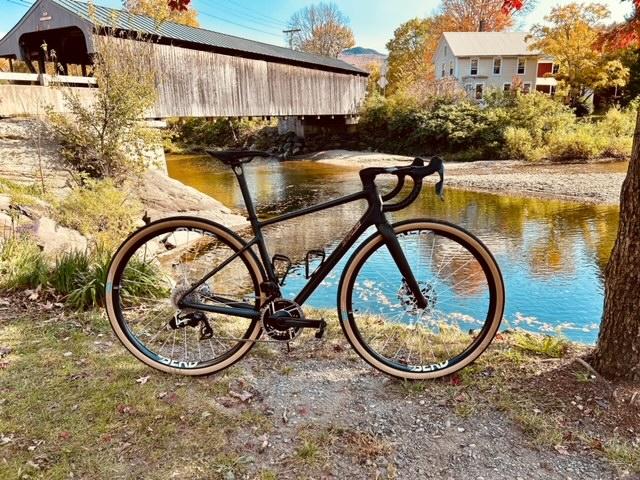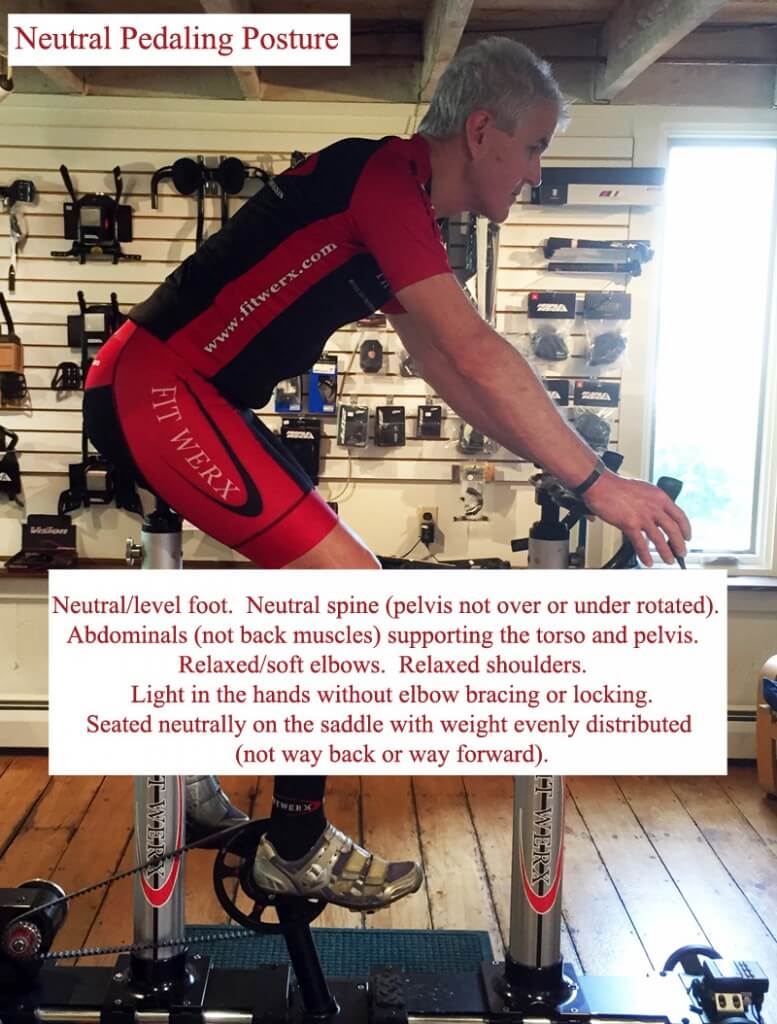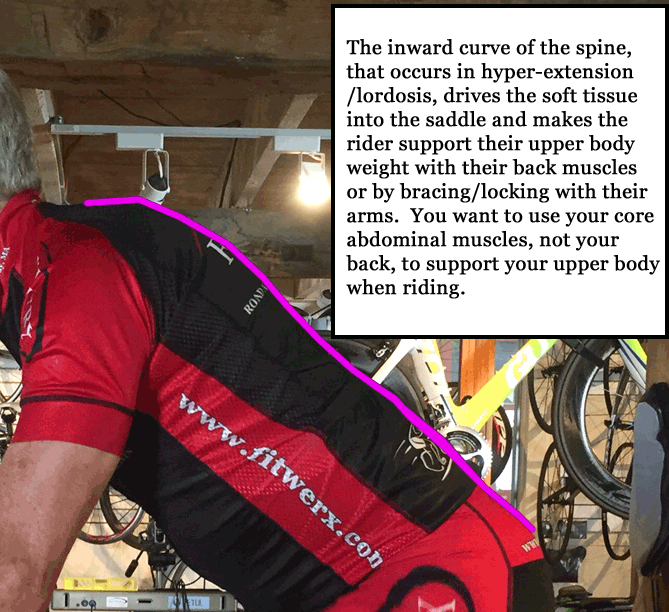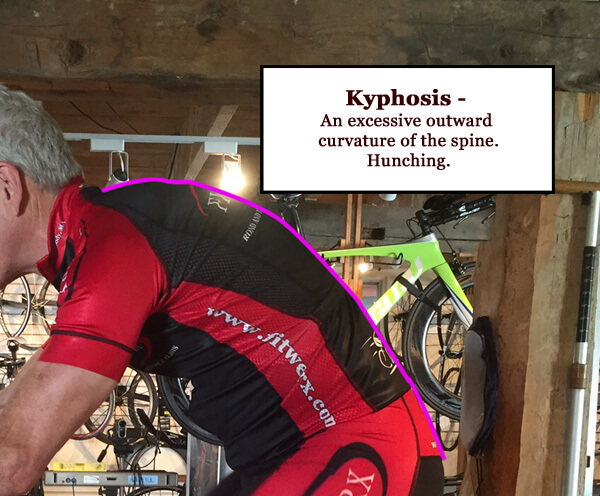Many Seat Problems on Bikes are Rider Problems
As I write this, the leaves are changing color, the days are a pleasant 70 degrees, and the nights are in the 50s. Almost perfect cycling weather. This being said, just because the weather is great doesn’t mean that you are enjoying your rides. Many cyclists endure varying levels of pain because they believe that “bicycling is supposed to hurt.” While this idea has some merit—since muscle soreness can indicate that you’ve pushed your muscles beyond usual—it’s important to distinguish muscle aches from sharp pains or persistent issues, such as saddle soreness. Some sharp pains and soreness from riding can be traced back to a riding position that could be improved in conjunction with the rider gaining an understanding of neutral pedaling posture.
What is a “Good” Riding Position?
A good riding position can be compared to the “universal athletic pose” used in many other sports (imagine a baseball shortstop or tennis player waiting for a serve). In this universal athletic stance, weight is balanced over the balls of the feet. The supporting muscles in the core, inner thighs, lateral glutes, and buttocks all work together to keep the upper body stable and ready to react. When riding a bike, the supporting abdominal and glute muscles stabilize and support the upper body; the legs push the pedals by applying pressure through the balls of the rider’s feet; and the hands add a third balance point to keep the rider stable and comfortable. All three contact points support the weight of the rider in some way.
“My Saddle Hurts.”
Cyclists often cite saddle discomfort as a top concern when riding. If this is happening, then the rider’s weight is resting on a place it should not be (soft tissue/perineum) or too much of the weight is on an area – the sit bones, for example. While the saddle might contribute to the discomfort, it is important to consider other factors, such as the rider’s posture. For example, when was the last time you thought about the position of your feet while pedaling?
Pointing your toes can encourage your body to follow and slide forward on the saddle to maintain balance. This shift can increase pressure on the groin and heighten instability at the sit bones. To counteract this forward slide, riders often sit on the nose of the saddle or adopt a “braced” position, pushing back on the handlebars and bracing themselves against the back of the saddle. The former can put a lot of pressure in the wrong places while the latter can take a lot of muscle energy and increase pressure on the hands, neck/shoulders, back, and sit bones. If you want more detail on the comfort problems that can be caused by counteracting toe-pointing, read this post.
“But I Don’t Point My Toes.”
That’s great—one less variable to consider.
Over-rotation of the pelvis is another common issue riders encounter. When riders are specifically asked, “Where do you feel pain?” a common response is numbness and pressure in the soft tissue relating to the saddle.
When the hips are over-rotated, it can increase pressure toward the front of the groin, which may result in soft tissue saddle soreness. It can also increase pressure in the back, neck, shoulders, and hands. Read this linked article to explore the importance of engaging the core muscles to support the upper body and pelvis in greater detail.
Postural Position
While pelvic over-rotation creates issues, pelvic under-rotation sometimes causes its own issues. Under-rotation of the pelvis can manifest itself as an overly hunched posture, where the rider doesn’t allow the pelvis to rotate forward at all. Taken to extremes, under-rotation can overload the neck and shoulder muscles as they brace against the bars in an attempt to lock themselves against the back of the saddle. In some cases, it can create too much pressure on the sit bones too.
Since both under- and over-rotation are problematic, how do you find a solution?
Does Your Bike Setup Encourage a Poor Pelvic Angle?
A correctly set up bicycle will make it as easy as possible for the rider to achieve a neutral pelvic angle by having the hands, feet, and seat share the load of the rider. This being said, a critical factor in how well your position works for you is how well you engage the key support muscles as you ride. While abdominals, lateral glutes, and thigh muscles are all capable of being conditioned to support and produce power over prolonged periods, back and shoulder muscles evolved to help us reach and rotate and can become painful when asked to do long-term support tasks they were not intended.
As you can see, saddle issues can be complicated and multifactorial. For this reason, it is important to view the bike and the rider as a cohesive unit. If one aspect of a rider’s fit is changed, it can create other, previously unnoticed, issues. For example, changing the saddle height also affects the angles at the hips, shoulders, neck, and wrists. While this adjustment might solve one problem, it can lead to new discomforts elsewhere if not accommodated. For this reason, a comprehensive bike fitting will examine each aspect as part of a greater whole.
“How Do I Know if I Do Any of This?”
One of the best ways to diagnose and start to resolve your saddle discomfort is to complete a comprehensive bike fitting with a qualified bike fitter. By assessing your muscular patterns and tendencies, a good fitter can help you better understand where comfort problems are originating and how your bike is contributing. From there, a riding position tailored specifically to encourage a neutral riding posture supported by endurance muscles that are well-suited to support tasks can be built.
What Sets a Bike Fit with Fit Werx Apart?
In a Fit Werx bike fitting, we spend a significant portion of the fitting discussing and working on posture and pedaling technique with many riders. Why? Because riders frequently don’t know what neutral posture on a bike looks or feels like. Related, even the best-fit bike in the world will not solve some problems if the rider is not using the right muscles and technique to support themselves and reduce pressure.
We look at a lot of bike fit technology as communication tools rather than prescriptive shortcuts. We use a gebioMized pressure scanner to track pressure during your fitting and we provide you with before and after motion capture video and still shots from your fit session to help reveal your patterns and to allow you to review the results in the future as you continue to work on things. If you have had a fitting with us at Fit Werx in the past and are still having saddle issues, start by looking at your videos and reviewing the comments related to each. If that doesn’t give you insight, contact us!
Change Takes Practice and Potentially Outside Help
It is important to recognize that there are no quick fixes for many saddle issues on the bike. Optimized postural and technique items are not easy for many riders to understand or change. It took a lot of repetition for many of the current habits to form and it will likely take a lot of repetitions to encourage new positive habits to develop. Most riders need to change their muscle recruitment and support structure, on and off the bike, to achieve their comfort and performance potential on the bike in the long term.
The above are all reasons why working with a qualified posture and technique-based bike fitter (a “Bike Fit 2.0” fitter) in combination with medical specialists, like a physical therapist with a specialty in Postural Restoration, can be so crucial to truly making change and creating a solution to your saddle woes. After you understand what you need to do, it can take a lot of practice to train yourself to actually do it and solve issues like sit bone pain on the bike. Riding a trainer is a great time to change riding posture in a controlled environment.
Click the links to learn more about our fit process and qualifications and contact us for more information about our fitting process and to discuss issues you are having on the bike.





